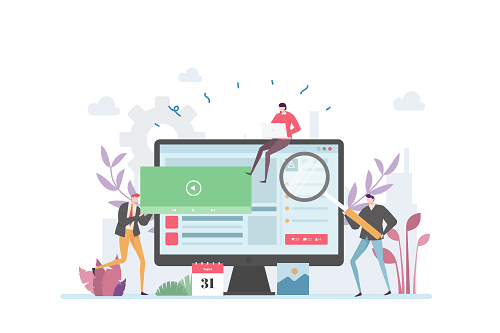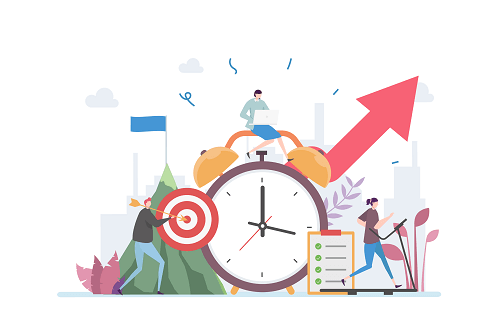Understanding User Intent – How to Create a Website for Users
Since 2017, webmasters, designers, and developers have been focusing on user intent, experience, and interfaces. These factors are what keep people on your site or buying your products.
It’s a common thought in SEO and marketing that you just need to rank on Google, and that’s that. But, without users, it’s nearly impossible to meet any goals you’ve set.
While you’re thinking of the goals of your website, you should consider who will use it. Whether you’re looking to drive traffic, conversions, or improve keyword rankings, you have to market to someone.
So, how can you create a strategy for your website and meet your goals? In this guide, we’ll answer every question you might have and how to get it right.

What is User Intent?
First off, let’s define user intent and what it means for the end goal of your website. These days, every site is customer-centric and obsessed with offering users what they’re looking for. In fact, to rank on Google or other search engines, you have to do this to get on the map.
But what does “customer-centrism” mean for search engine optimization specifically? Essentially, there should be more to your site than the technical aspects. It should go beyond keywords or high-quality content and aim to give your desired users what they want. While it might seem obvious, most sites miss the mark because they’ve pushed technical SEO first.
By focusing on the user’s intent, you could actually get higher traffic and conversions. Also, it determines whether or not people will return to your site for more or click away. Since we’re all aiming to get more traffic and engagement, you need to focus on the type of content your site offers.
User Intent and Google
Most blogs, like this one, focus on Google because it currently holds over 85% of the market share for search engines. And, it’s continuously evolving to meet the demands of those using it.
One factor we should note is that Google is now focusing on user intent because it wants to give people exactly what they need. If you’ve been optimizing for a while, you’ll know all about this change in business practices.
Part of the changes in Google’s algorithm now focuses primarily on the experience someone has when interacting. If they “bounce” quickly, it’s search programs will notice and push your page down.
Types of Search Queries
Every visitor to a website has an end-goal in mind; thus, understanding what it is in your site’s context is vital.
So, when they’re searching, you need to consider what they want from you or the keyword. Generally, there are four categories of search queries:
- Informational Search Queries – your user wants to learn
- Transactional Queries – your user wants to buy something
- Navigational Queries – your user wants to find a specific website
- Investigation Queries – people are looking for expert advice or options to buy
Creating content for these queries requires you to think as a user because user-generated content will perform better.
To start optimizing for your users, you’re going to need to start with the basics, namely:
- Research
- Site Purpose
- Target Markets
- Target Users
- Site Structure
- Page filing
- Load speed
- Mobile-friendly
- Content Writing
- Title Tags
- Description
- Headings
- Optimizing

Researching for User Intent
Before you start making sweeping changes, you should be researching every step of your plan. While this is mainly done for the development process, you can still go back and do more.
If you don’t research, you won’t know who would use your site and benefit from it. So, as we discussed earlier, start with the intention of your site (transactional, informational, navigational, or investigation).
You can have overlaps of intent, but you need to focus on one when you start optimizing. Then, you can look into a target market and users that would ideally visit your website.
Setting Up Site Structure
With your goals in mind (and research to back it up), you can start planning your site and how it will flow. It’s never too late to revise your site structure, starting with your intended pages, posts, blogs, or URLs.
Here, you need to categorize and focus on the bigger picture of what you’re offering. First, you need to decide on your static content and how someone will access it. Things like an about us, contact us, and other informational pages fall under this.
Second, you need to decide where and how you’ll divvy up other content, like products, blogs, or smaller static pages. With that in mind, you can then decide on navigation elements and where to direct a user. By focusing on a structure first, you can take advantage of user intent to provide more resources.
But, you need to make sure that these resources load fast and will be mobile-friendly. We’ve written some handy blogs you can read later.
Writing User-Centric Content
Every SEO specialist is probably familiar with writing content and finding general keywords to focus on. However, it should go further than just stuffing in some terms here and there.
When you’re writing, you should be thinking like a user and what they’d find helpful. For example, I’ve defined user intent above in the context of SEO and websites. But, before that, I introduced you to why it matters in 2020 and beyond.
Giving yourself (and a user) context can streamline your writing and help you to place keywords naturally. Still, there’s a fine line in SEO that can sometimes be hard to see when it comes to keywords. That’s why there are so many tools for natural language and overall page improvements out there. However, it will still start with you and how you set up the content on your site.
There are some usual suspects in this section that you might have heard of, such as:
- Writing attention-grabbing titles for search engine results pages (SERPs).
- Adding a description that grabs attention and briefly gives context.
- Placing your primary keywords in your headings and body of the text.
- Adding images to your content to add back the flow.
- And, as always, do some keyword research to get the important terms in there.

Conclusion: Specific Optimization for User intent
So, if the old methods aren’t working anymore, how are you supposed to optimize for user intent? Well, we’ve gone over the basics, now we’re going to get into the specifics.
Firstly, you need to identify the queries people are using to get to your site through Google webmaster tools. Unfortunately, you’ll need an established website to get this information. Secondly, you need to understand the intention behind those queries and what the end result needs to be. If you’re aiming for informational questions, you’ll need to give the information most suited to that.
Then, you can add the optimized or new content to your website and track the changes on Search Console or Analytics.


